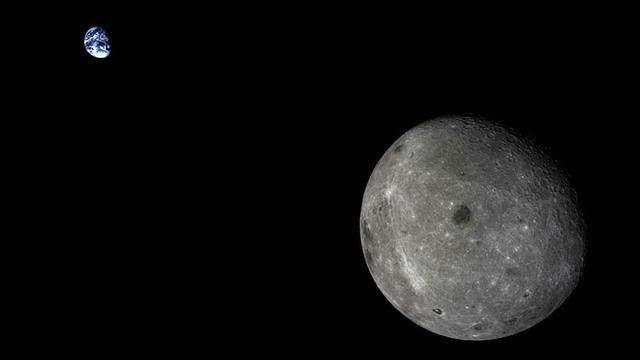
Sichuan - China Space Agency (CNSA) has launched a satellite aimed at supporting communication features on the Far Side of the Moon's farthest exploration mission.
The relay satellite named Queqiao has been launched using Long March 4C at LC-3 Launch Pad at Xichang Satellite Launch Center (XSLC), Sichuan Province on May 20, 2018 at 21:25 local time. Similarly, as quoted from NASASpaceFlight.com, Monday (21/05/2018).
The launch of the satellite is part of a mission supporter called Chang'e 4, which was conceived to meet China's ambition to become the first country to visit the furthest side of Lunar.
The Queqiao satellite is designed as a communications network platform between operations center on Earth and a rover on the Moon that will explore the Far Side of the Moon.
However, for now, only the newly launched Queqiao. While the rover in question will be sent and landed on the Moon in the future.
"The launch of this satellite will be a key step for China to achieve its mission of becoming the first country capable of delivering satellites, landing it on the plains, and exploring the farthest sides of the moon," said Zhang Lihua, manager of the Queqiao launch project to Chinese state media Xinhua.
Queqiao is reported to be orbiting around the furthest side of the Moon which is about 455,000 Km from Earth. When it arrives, the satellite will be the first to orbit in the region.
The launch of Queqiao marked the beginning of Chang'e 4's mission, an ambitious Chinese project aimed at outperforming other countries' achievements in the field of space.
According to reports, Chang'e 4 will run in two separate series.
The first mission, the launch of the Queqiao satellite and the operation of the satellite communications platform with the operations center of China's Space Agency on Earth.
Furthermore, the mission will send and land a number of other tools to the surface of the furthest side of the Moon, ranging from lander (lander) to rover.
According to the projection, the second mission will be held in the last half or the end of 2018.
The location of the second mission landing is estimated to take place at Von Karman Crater at the Aitken Arctic Basin on the Moon.
When the lander and rover have landed, the first Queqiao satellite arrives will bridge the signal relay and communicate those devices with the Chinese operations center on Earth.
China Catches Backwardness

China aims to catch up on Russia and the United States to become a space power by 2030.
Beijing is also determined to launch the construction of its own manned space station next year. As for the landing mission of Chinese astronauts to the Moon is projected to be completed in 15 years.
To date, China has insisted that its ambitions are purely for scientific and peaceful purposes.
Nevertheless, the US Defense Ministry has accused them of engaging in militaristic and rear-view activities, with a covert agenda to prevent other countries from using space-based assets during the global crisis.
Vote good-karma As Witness || Vote bue As Witness || Vote hr1 As Witness
|| Vote aggroed As Witness || Vote busy As Witness || Vote extie-dasilva As Witness
|| Vote esteemapp As Witness ||
@minnowsupport | @bue | @hr1 | @aggroed | @busy | @extie-dasilva | @esteemapp

Download eSteem in Google Playstore => eSteem Google Playstore
"Blog, vote, share pictures and get paid "
#esteem #esteemapp #good-karma

Join the PALnet Discord room now => https://discord.gg/HYj4yvw "Join hundreds, or even thousands of MSP members online, anytime! The Peace, Abundance, and Liberty Discord server is the true home of the Minnow Support Project. "
#minnowsupport
If you don't mind please upvote this post
I would appreciate it
Thanks :)
Vote me As Witness